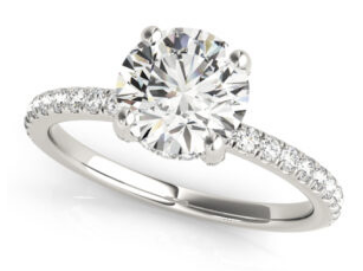Natural Versus Lab-Grown Diamonds
 Diamonds grown in a lab? The latest jewelry industry trend is making some waves, but what do you need to know before jumping in? Lab-grown diamonds have been around since the 1950s, but have only gained popularity in the last 20 or so years. Let’s explore the pros and cons of natural or organic diamonds and lab-grown ones.
Diamonds grown in a lab? The latest jewelry industry trend is making some waves, but what do you need to know before jumping in? Lab-grown diamonds have been around since the 1950s, but have only gained popularity in the last 20 or so years. Let’s explore the pros and cons of natural or organic diamonds and lab-grown ones.
Natural/organic diamonds take billions of years to form under extreme heat temperatures and high pressure. Lab-grown diamonds, which are also known as man-made diamonds, engineered diamonds or cultured diamonds, are grown in a laboratory setting using processes that duplicate the conditions under which diamonds develop naturally. Lab-grown diamonds can be formed in six to ten weeks and have the same physical, chemical, and optical properties as mined diamonds because they are created from the same material as natural diamonds. Specialized equipment is needed to distinguish between natural and lab-grown diamonds.
So why might you want one or the other?
- Natural Diamonds
- Pro: They have sentimental value as they are harder to come by, have historical significance and are works of art created by the earth.
- Pro: They have lasting monetary value due to being more rare and their value increases with time.
- Con: Natural diamonds are more expensive than a comparable lab-grown.
- Con: There are ongoing concerns over environmental and humanitarian repercussions of natural diamond mining processes.
- Lab-grown Diamonds
- Pro: They are an excellent value and you will be able to maximize your budget.
- Pro: They have fewer defects due to the laboratory environment.
- Pro: They are a responsible choice since they are not mined.
- Con: They will keep the value you paid, but will not gain value.
- Con: Resale value may be just pennies on the dollar.
Ultimately, both are a good choice based on your priorities. Stop by Bridgewaters and we can help you determine whether a lab-grown or a natural diamond is the best fit for you!
